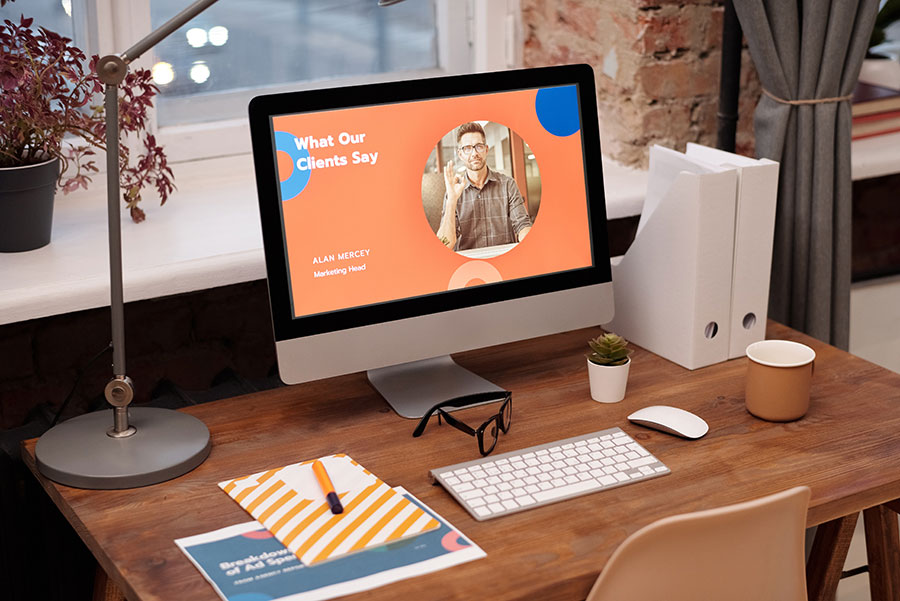Today’s world has become increasingly interconnected, with the internet permeating almost every micro-space of our lives. Thus, on top of in-store displays achieved through custom branding solutions, businesses must also have a robust online presence. Enter web design.
As your website is often a person’s first point of contact with you, it’s vital to make it as effective and engaging as possible. In this article, we’ll examine how you can craft a site that truly embodies your brand and helps you achieve your business goals.
1. Understand your brand identity
Before working on your web design, it’s crucial to have a clear understanding of your brand identity. This encompasses the business’s mission, values, objectives, and target audience. Your website should provide visitors with a clear sense of what your company does and who you do it for. Therefore, focus on creating one that successfully communicates essential information in an easy-to-navigate format.
2. Choose a responsive design
A responsive design produces an aesthetically appealing website that functions well on any device. This is vital since a considerable percentage of online visitors comes from the smart-phone demographic. Therefore, if your site works well on a number of platforms, you can avoid losing valuable traffic and potential customers.
Additionally, websites with a responsive design can help you rank higher on search engine results pages (SERPs).
3. Focus on user experience
User experience (UX) plays a critical part in a website’s success. This encompasses how users interact and feel about a site’s design, layout, and content. A thoughtfully designed UX can easily translate to increased engagement, repeat visits, and conversions.
To further improve UX, ensure that your pages are intuitively built for smooth navigation. Visitors should quickly find the information they need with minimal hassle. Use clear and straightforward language, avoiding industry jargon that may confuse visitors.
4. Use appropriate colors, font, and imagery
Indeed, the devil is in the details. The design elements you choose for your website can significantly influence how users perceive your brand. For instance, color schemes can create a specific mood or evoke particular emotions in your audience. Thus, choose hues that complement and reinforce your brand’s message and values.
Font selection is also vital since it impacts readability and contributes significantly to the overall aesthetic appeal of your site. Avoid using too many fonts, and use easy-to-read fonts throughout your pages.
Lastly, let’s talk about imagery. You’ll need to ensure that your photos or pictures are of high quality and are relevant to your target market. Use images that trigger the experiences that you want your brand to provide.
5. Incorporate a call-to-action
A call-to-action (CTA) is a critical element of any website. CTAs encourage users to perform a specific behavior, such as filling out a contact form or making a purchase. Make these elements prominent so your audience knows what action or next step to take. This will help increase conversions and user engagement.
6. Consider accessibility
One essential aspect of web design that’s often overlooked is its accessibility. An inclusive website ensures that individuals with disabilities can access and use your site. Thus, you must adopt adaptability best practices to ensure that all users are welcome on your pages.
One popular example is subtitling video content. This allows users who are deaf or hard of hearing to understand your brand message. Subtitles are also a favorite among users who are non-native English speakers or those who would like to keep the videos on mute. Enabling keyboard navigation is also beneficial for your audience, who may have difficulty using a mouse. Other optimal protocols include using highly readable content and adding alt-text image descriptions.
7. Optimize for page speed
Another key factor that can power up your web design is page speed. A slow-loading website can frustrate users, lead to a higher bounce rate, and negatively impact your brand’s reputation. Alternatively, a fast-loading site can provide a positive user experience, increase engagement, and help establish a strong brand image.
Thus, you’ll need to ensure that your pages load as fast as possible by leveraging effective techniques like compressing images, using caching plugins, and minimizing the number of HTTP requests.
The takeaway
Creating a site that boosts your brand’s online presence requires careful consideration of many factors. Remember, web design is not just about aesthetics but also about functionality, and user experience. By prioritizing the critical elements we shared and staying up-to-date with the latest trends and technologies, you can create great-looking pages that can drive sales and achieve marketing objectives.
So, regardless if you’re a small startup or a well-established brand, investing in web design can take your online presence to the next level. Primed to propel your business to new digital heights? Then Nebulas Website Design, a premier WordPress web design and hosting company in Braintree, Essex can take you there. So tarry not, and contact us today!





